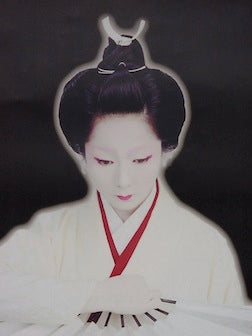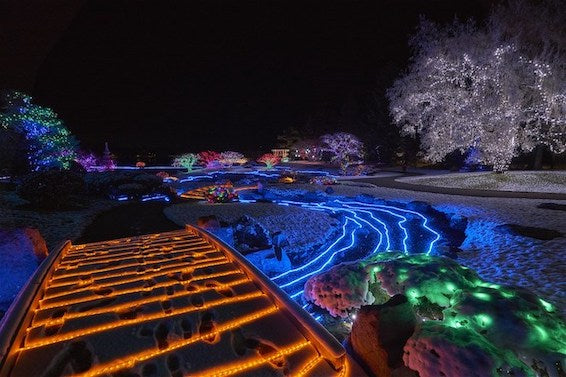Until the eighteenth century, woodblock printing remained primarily a convenient method of reproducing written texts and disseminating Buddhist scriptures. The designer and painter Tawaraya Sōtatsu (died ca. 1640) was the first used to carve woodblocks for stamps in the early seventeenth century to print designs on paper and silk.
Then along came Ukiyo-e, which refers to Japanese paintings and woodblock prints that originally depicted the cities' pleasure districts during the Edo Period (1603-1868), when the sensual attributes of life were encouraged amongst a tranquil existence under the peaceful rule of the Tokugawa Shogunate. The regime also set aside certain walled areas in the cities where theaters, teahouses, and brothels were licensed and which came to be known as the "pleasure districts." As the Edo period began, livelihoods became stable, and the economy expanded rapidly, benefiting all, but especially the upper classes. With more money and no war to fight, they were able to spend their wealth on leisure and pleasurable pursuits. Ukiyo-e was truly Japanese pop culture of the Edo period.
As a result, a new aesthetic reflecting this decidedly Japanese lifestyle found a new audience with a rising middle class. Ukiyo-e was born as an evolution of Yamato-e, one in which the new lifestyle was emphasized and celebrated. The extravagancy of the wealthy still captured the imagination of the artists and the common folk, who were keen to discuss what was being depicted on the Ukiyo-e woodblock prints. Those who could afford it, from the middle merchant classes upwards, would purchase the Ukiyo-e, displaying them at home as conversational pieces, and a sign of a successful life.
Bijin-ga, meaning "beautiful person picture," was a dominant genre of Ukiyo-e. Early prints often depicted famous courtesans and Kabuki actors who were often viewed as celebrities, but subsequently, artists like Utamaro began to portray women who were known for their beauty. With time, the subject matter of the woodblock artist expanded to include famous romantic vistas and eventually, in the final years of the nineteenth century, dramatic historical events. These pictures could be made in great quantity, and featured popular scenes that appealed, in particular, to the wealthy townspeople of the period. Some of the other great masters of the genre were Suzuki Harunobu, Keisai Eisen, Itō Shinsui, Toyohara Chikanobu, Uemura Shōen, Isoda Koryûsai, and Torii Kiyonaga.
Ukiyo-e depended upon collaboration between four people. The artist, using ink on paper, drew the image that was then carved by a craftsman into a woodblock. A printer then applied pigment to the woodblock, and a publisher oversaw and coordinated the process and marketed the works. Ukiyo-e were most commonly produced as a sheet of prints, which were so inexpensive that many could afford them. They also were collected in books, called e-hon. Sometimes, a print might be made using two or three sheets of paper, creating a triptych effect. Portraits used a vertical format, and landscapes a horizontal format, but occasionally, vertical and narrow prints would be made, creating the effect of a wall scroll that would be displayed on columns, pillars and the feature wall of the Tokonoma, (alcove) in entrance rooms.
Ukiyo-e is stylistically recognizable by the presence of a bold thick flat line. Line work is the essence of Ukiyo-e, defining colored areas, delineating compositions, and separating areas of different depth. The standard Ukiyo-e would be arranged with a single flat plane, and the aforementioned lines and colors would be used to add movement and momentum to the plane. Tricks such as asymmetry and skewed viewpoints were also used to bring attention to the piece. As the color print became more common and well done, Ukiyo-e prints became awash with bright colors, but unfailingly delineated by the aforementioned line work.




